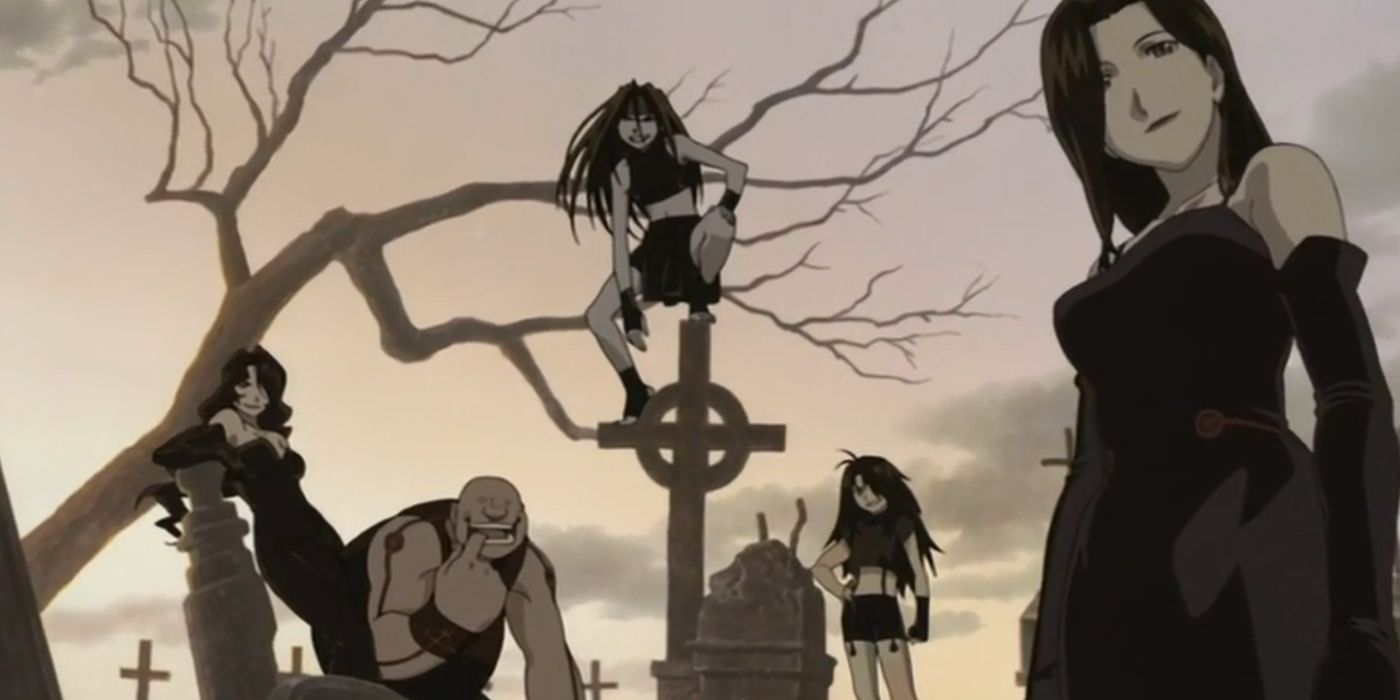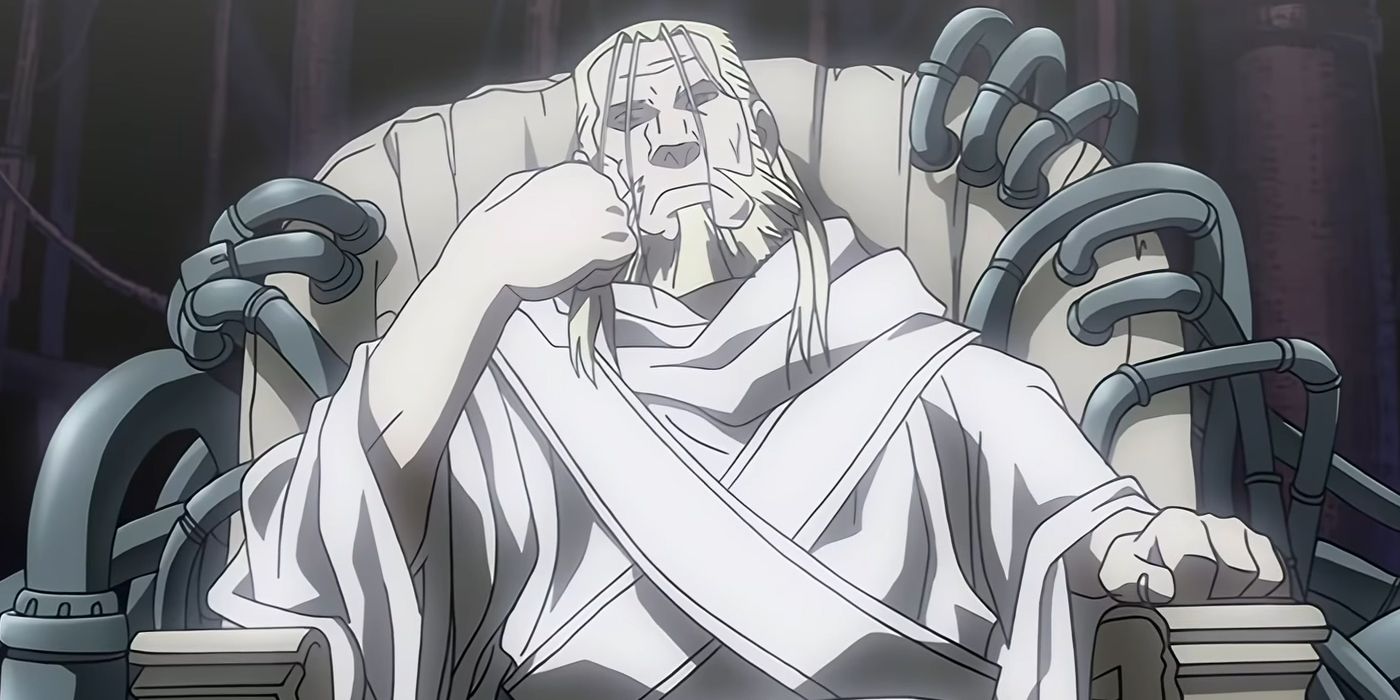Not many manga get to become anime twice, but Fullmetal Alchemist is one of the most interesting to do so because of how much they diverge--especially when it comes to the homunculi. The first series was praised for making its homunculi villains sympathetic, so why did Brotherhood make them so much less so?
In the 2003 anime, the trio of Sins known as Lust, Gluttony, and Envy see a lot of focus, and act as the main driving force for the plot in many circumstances. Their goal is still to obtain a philosopher's stone, but the reasons why are very different. The Fullmetal Alchemist manga wasn't finished at the time of the 2003 anime, so after roughly the midpoint, the series goes in its own direction, where the focus on the homunculus trio only increases. Brotherhood, by contrast, was created to follow the manga closely, and in the manga, the homunculi are more of a threat because they're working for someone else.
The 2003 anime explains the existence of the homunculi by stating that they are created from failed attempts at reviving the dead. Each homunculus represents an incident where someone attempted to do what Edward and Alfonse Elric did at Fullmetal Alchemist's beginning. It was a great decision because it ties the villains more closely to the heroes. The homunculi want the philosopher's stone to turn themselves into real humans, but they'll never be the person that was intended to be revived. All of this comes together to give them a tragic quality that makes them sympathetic without undermining their villainy. In Fullmetal Alchemist: Brotherhood, though, the homunculi are creatures who were all created by a single being, known as "Father," who is later revealed to be a homunculus himself. There, the homunculi get their names from the 7 Deadly Sins because Father created them from those elements of his own body, leaving him almost emotionless.
The Sins Get Meaner For A Reason
As a result of that difference in origin, the homunculi's personalities had to be completely changed. Brotherhood's homunculi are absolutely subservient to Father since they are a part of him, while the 2003 anime's versions are all independent beings. In order to properly convey Father's malice, they couldn't be as sympathetic as they were. The biggest victim of this change is probably Lust, whose storyline in the 2003 anime was the most sympathetic. In Brotherhood, she's exceptionally cruel and cold, the embodiment of Lust without love; this Lust is a character who doesn't need an arc in Fullmetal Alchemist. The villains of Brotherhood are still closely tied to the heroes' mistakes, since Ed and Al's dad Hohenheim bears responsibility for them. Rather than the seven sins having that desire to be human, however, Father is the one who wants to be more than he is--although what he aspires to is godhood.
Since the Sins weren't the main antagonists this time around, and instead were merely underlings, it makes sense to reduce their character complexity and transfer some of that to the real main villain. Given that the fate of some Sins in Fullmetal Alchemist Brotherhood isn't really conducive to a full character arc, it's better that they're treated as they are--even if that means they're worse as characters as a result.


